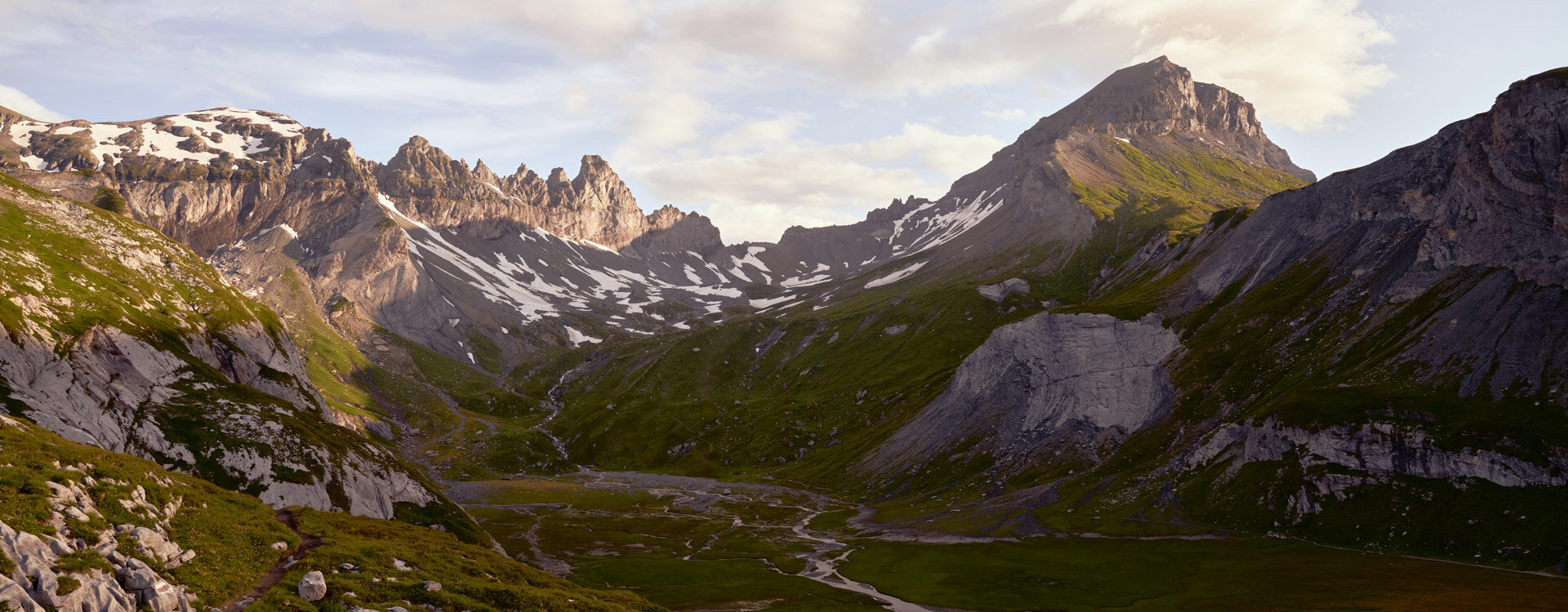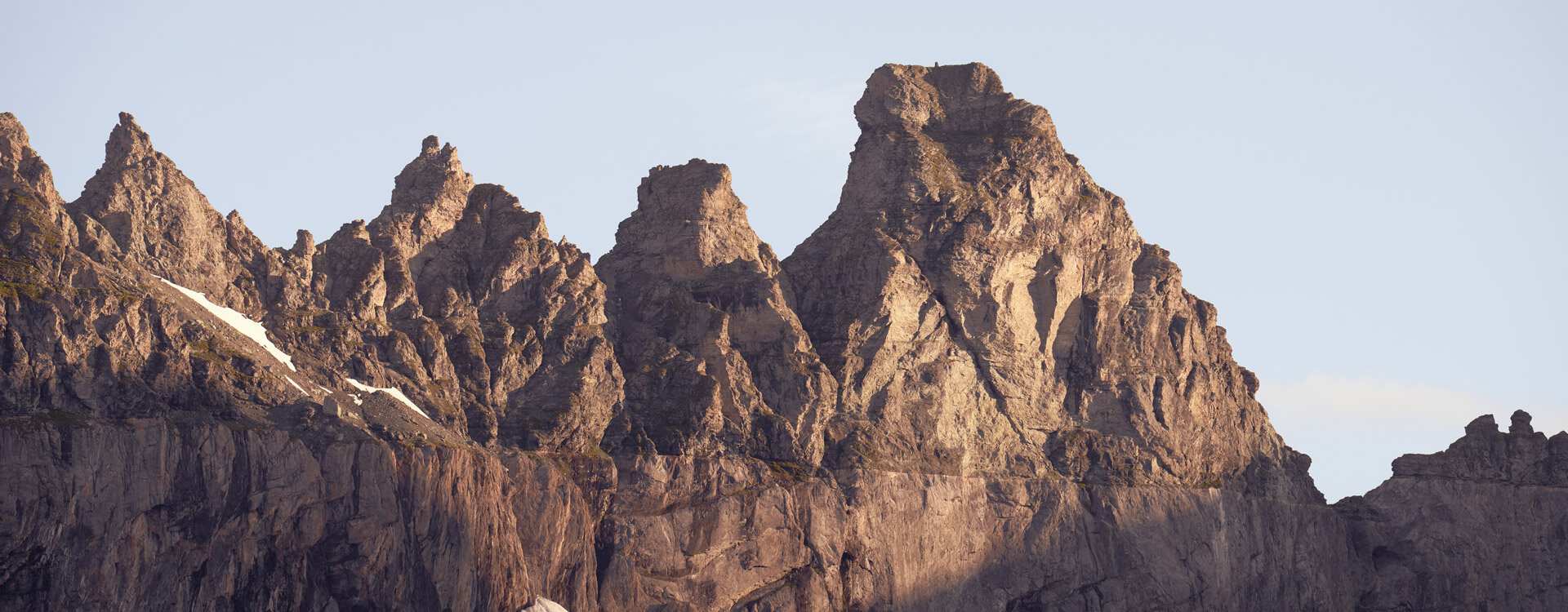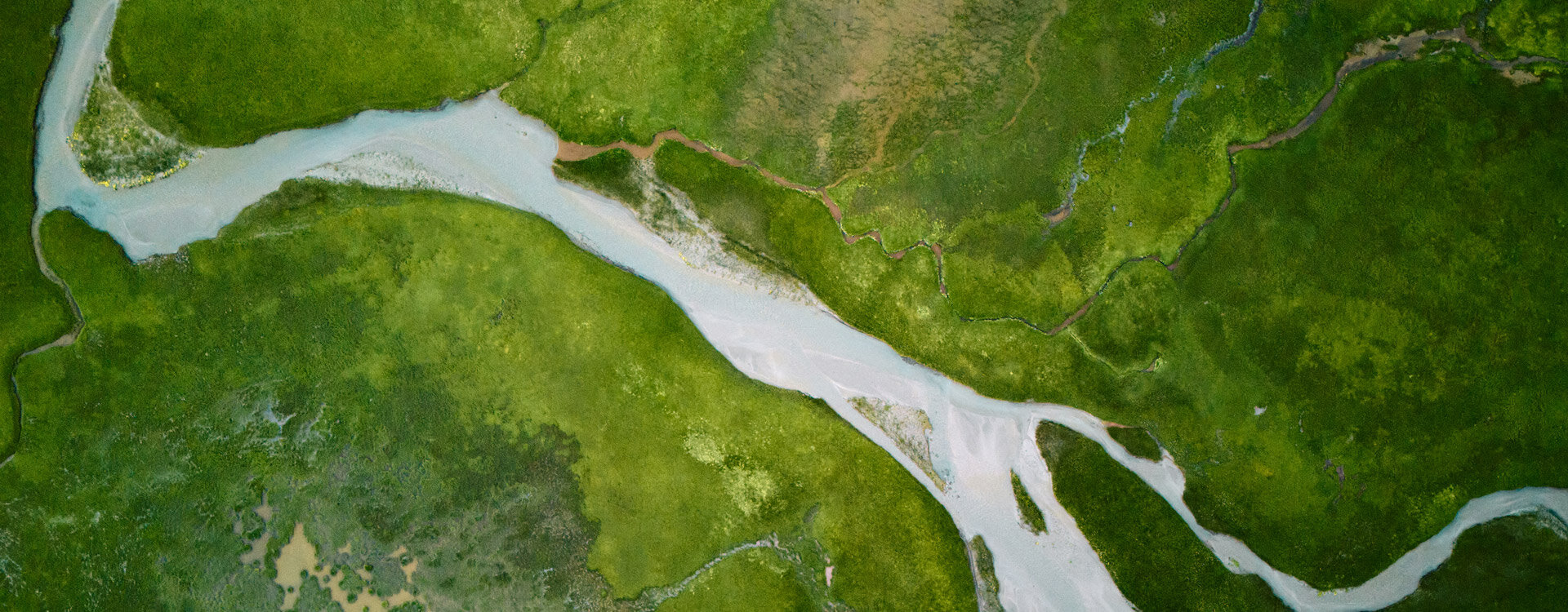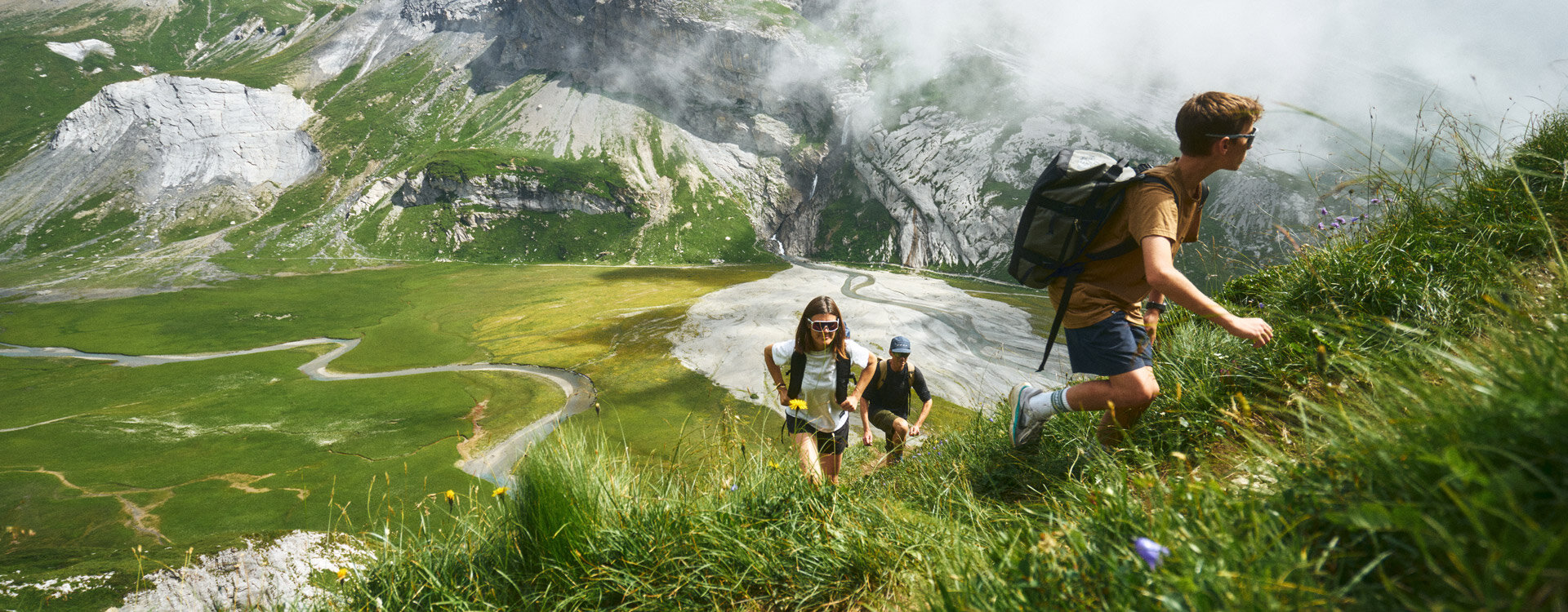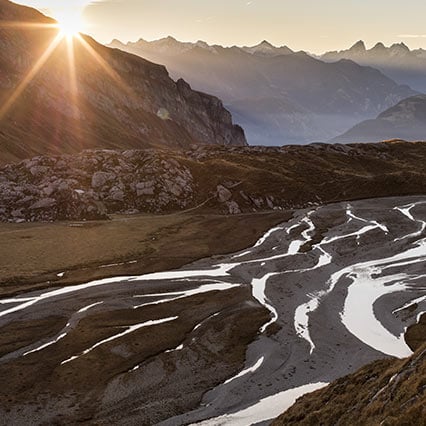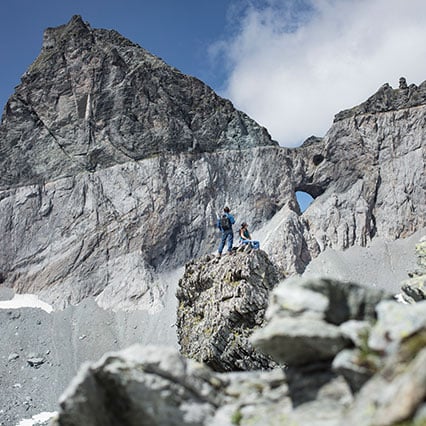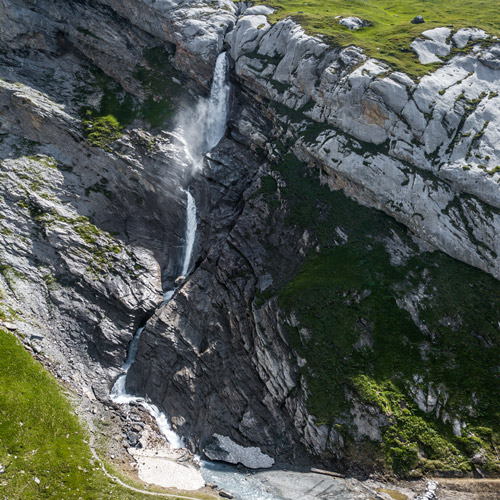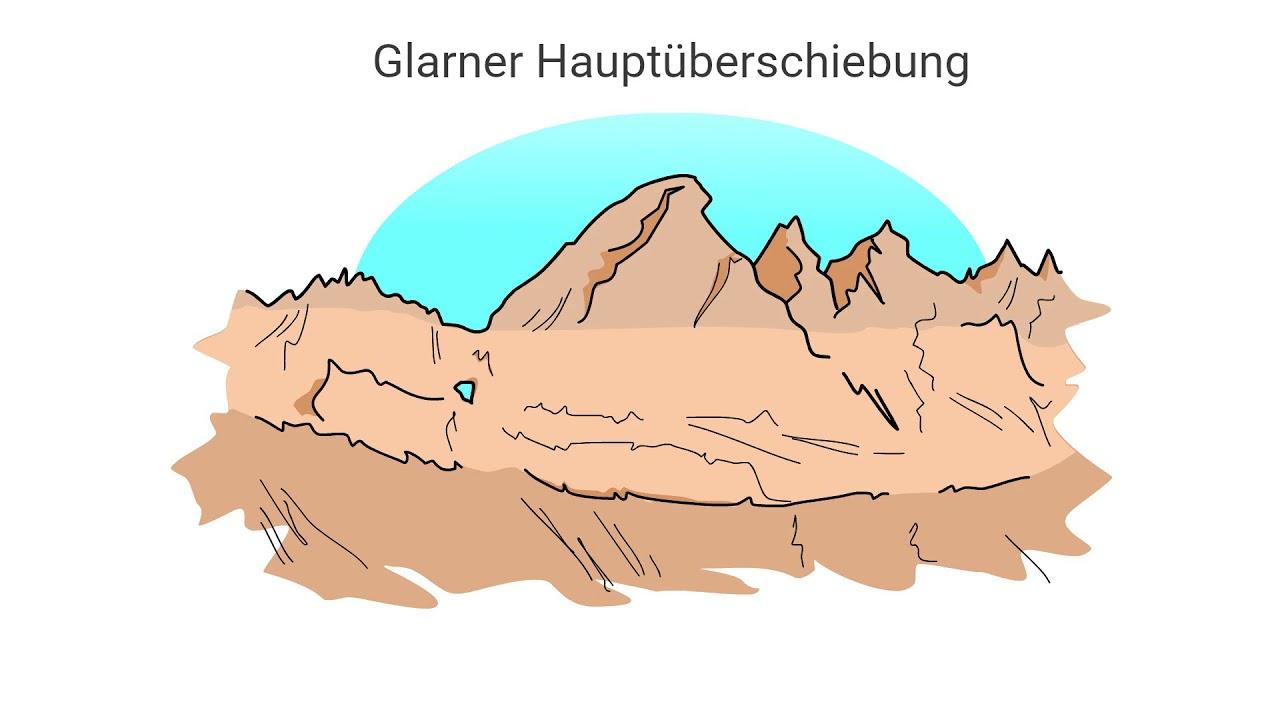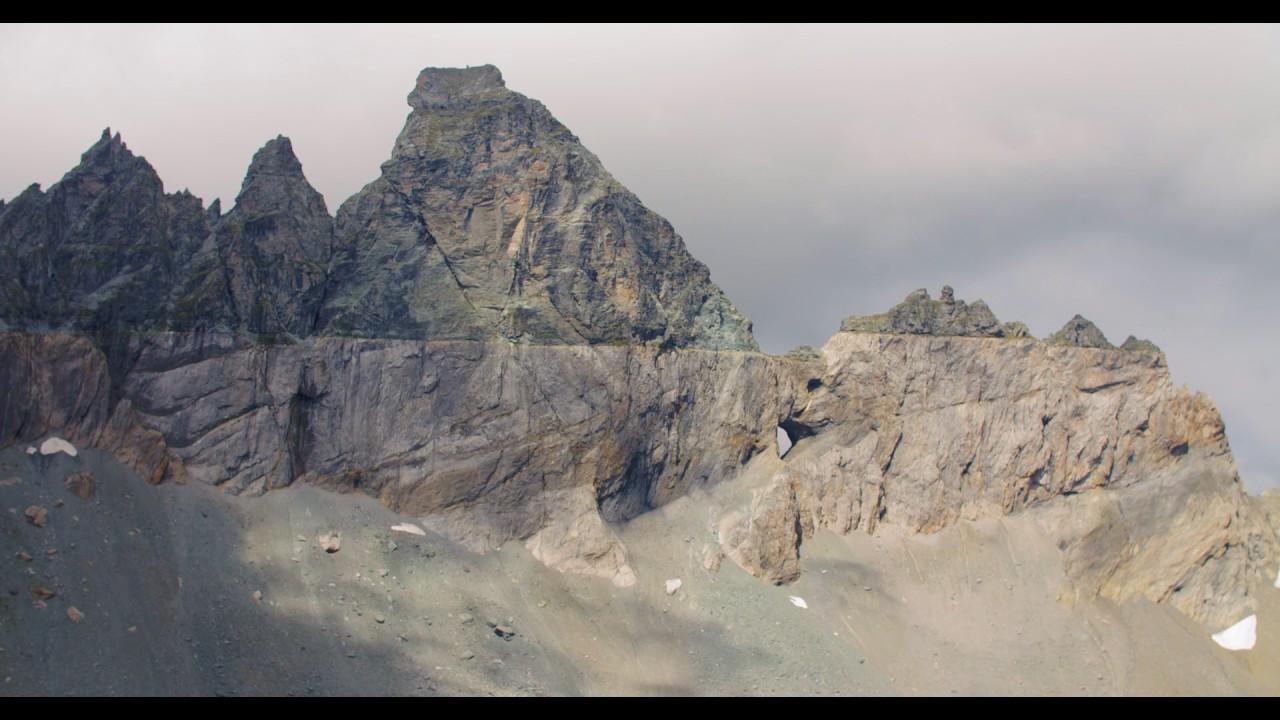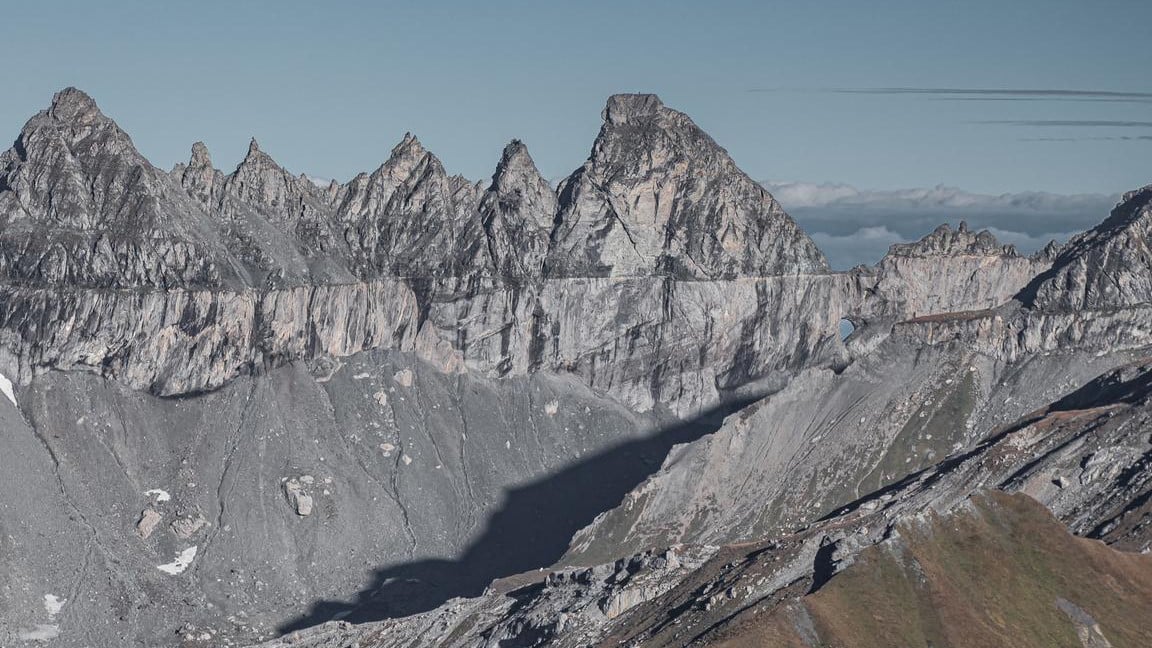UNESCO World Heritage Site Sardona Flims Laax
Tectonic Arena Sardona - where the Alps make history
Do you want to understand how the Alps were formed? You can get to the bottom of this question in the Sardona Tectonic Arena. Here, ancient rock pushed over younger rock - and created a habitat full of diversity. You can still see the traces of these powerful forces today: at Martinsloch, at the Tschingelhörner or in the surrounding mountains.
On the Segnesböden you will find protected nature of national importance. But all around - on the Flimserstein, the Cassonsgrat or in the Bargis high valley - a special biodiversity awaits you. To preserve it, you need to be mindful of nature, its plants and animals.
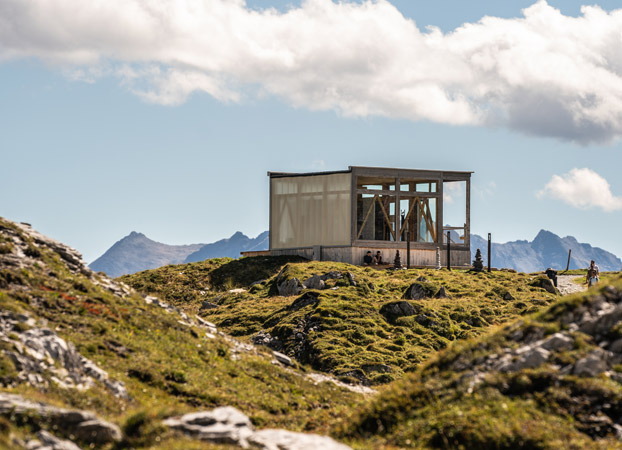
Visitor Pavilion Sardona
In the Sardona visitor pavilion at the Segneshütte, you can gain a unique insight into the history of the formation of the Alpine mountains and the largest landslide in the Alps. Immerse yourself in the past and travel back to the origins of the geological highlights of our region. The pavilion is open daily and every weekend an expert GeoGuide provides a modern view of the formation of the Alps.
Dates
Daily open
Prices
Free for all (no registration necessary)
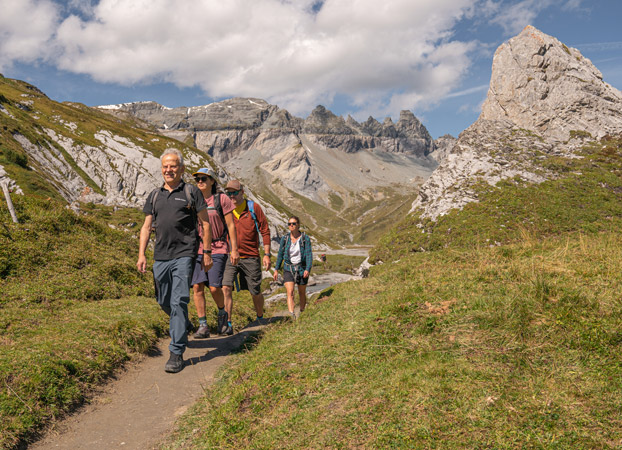
New: Free short guided tours
Our GeoGuides will introduce you to the Sardona Tectonic Arena - a place with unique insights into the formation of the Alps. The GeoGuides will take you on the new Sardona Mountain Flower Trail - through the middle of the colorful Alpine flora at the Segneshütte.
Dates
Saturday and Sunday: June 28 to August 17, 2025 and
October 4 to October 19, 2025
Sunday: August 24 to September 28, 2025
Start times:
11:00 and 14:00
Duration: approx. 1 hour (30 min walking time)
Meeting point
Flims visitor pavilion
Price / Registration
Free of charge & without registration - just come along!
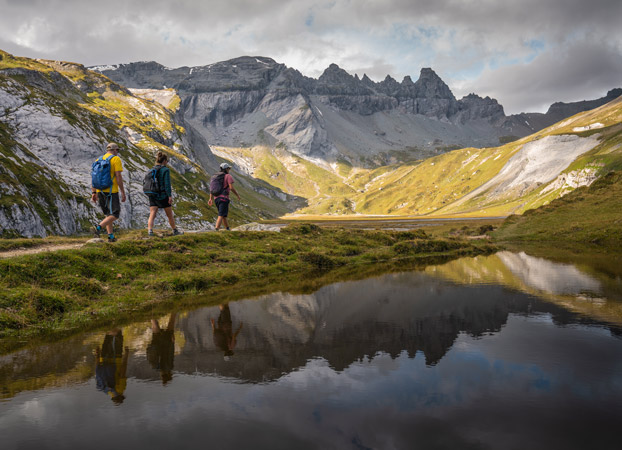
Coming soon
Sardona Mountain Flower Trail
Explore the colorful alpine flora on the Sardona Mountain Flower Trail. Your trail starts at the Segnes mountain station. Over 40 panels tell you exciting facts about the alpine plants and show you how diverse and fascinating their habitat is.
Be careful, you are walking in the Flimserstein plant conservation area. Don't pick any flowers and stay on the path - this way you help to preserve nature.
Nature conservation in Graubünden
Rules of conduct at Segnesboden
In order to preserve the special nature on the Segnesboden, we ask you to observe the following rules of conduct:
- Please only use marked trails
- Take your garbage back with you
- Dogs must be kept on a lead
- Camping is only permitted on campsites
- Only use official fireplaces
- Take a break at the marked water rest areas. This is how we protect the sensitive moorland landscape.
- The Trutg dil Flem hiking trail and the hiking trail along the Unterer Segnesboden are bike-free. Please follow the markings and information boards.
Glarus Thrust
Geology
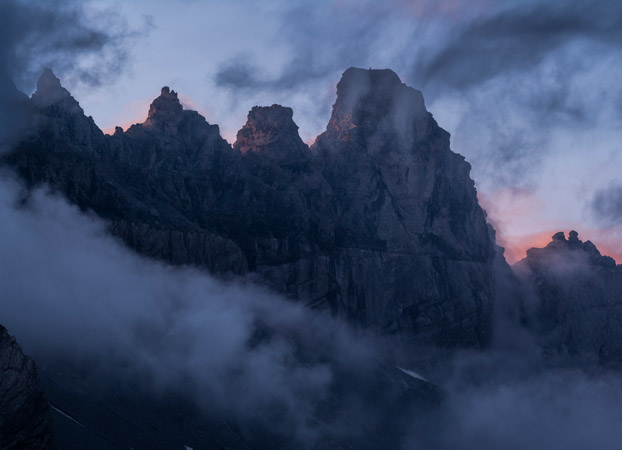
The Tectonic Arena Sardona provides unique insights into the history of the formation of the Alpine mountains and valleys. Along the line visible from afar, the Glarus Thrust, also known as the “magic line”, 250-300 million year old rocks were pushed onto much younger rocks, some of which are “only” 35-50 million years old. This happened 10-20 million years ago, far below the surface of the earth at that time!
Would you like to explore more?
If you would like to find out more about the formation of the Alps, the rocks in the World Heritage area and the tasks and objectives of the Tectonic Arena Sardona Association, you can find exciting information directly at: www.unesco-sardona.ch
Hiking, biking & climbing on Segnesboden
Activities around the Sardona UNESCO World Heritage Site
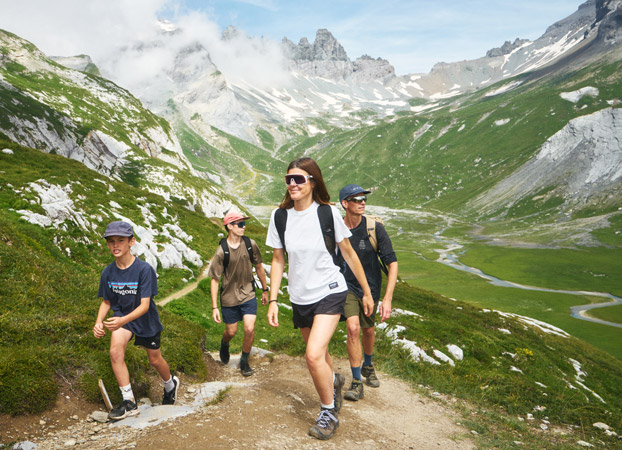
Hiking
Between waterfalls, glacier tracks and geological highlights: On well-maintained hiking trails, you can experience nature step by step on the Lower and Upper Segnesboden. Whether you take a leisurely stroll along the Segnesboden or head up to the viewpoints - the World Heritage Site is at your feet here.
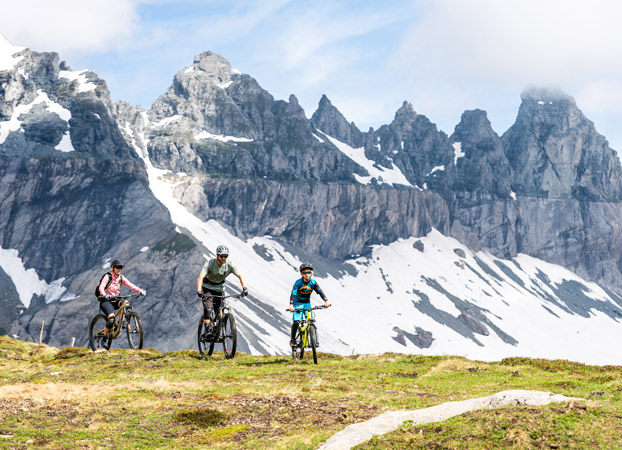
Biking
The trails in and around the Tectonic Arena Sardona offer everything a mountain biker's heart desires: flowing sections, technical passages and impressive views of the stunning Alpine landscape. Look out for the marked bike-free hiking trails.
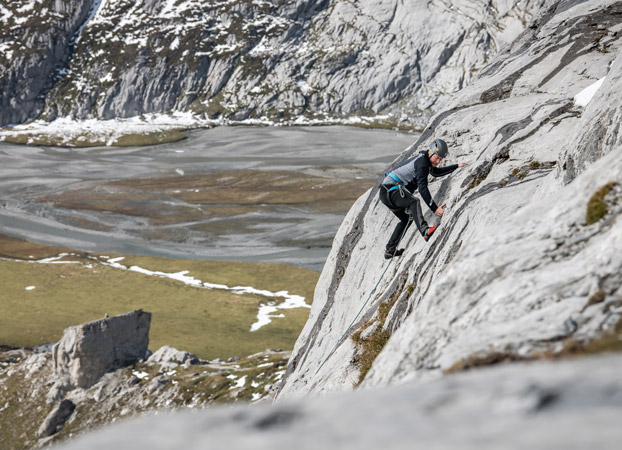
Climbing
The Segnesboden and Crap la Tgina climbing gardens offer both beginners and advanced climbers unforgettable climbing experiences - on limestone rock with a good grip, with deep views, far-reaching vistas and direct contact with geological history. Here you can feel the world heritage under your fingers.

